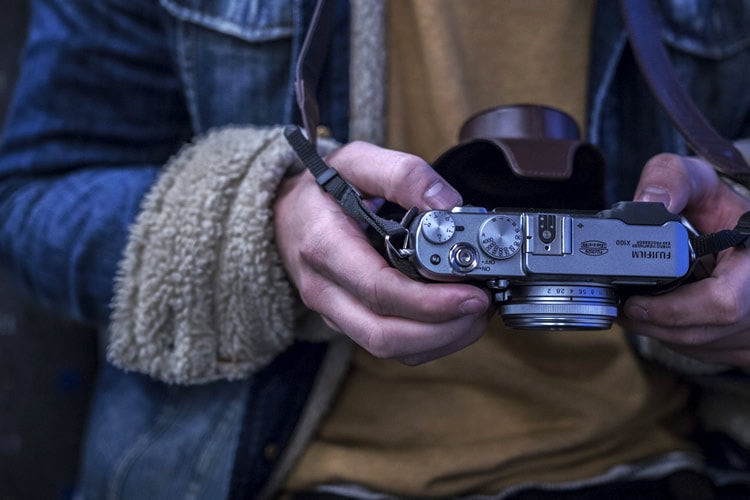4 Can't-Miss Tips for Developing Your Creative Vision
Developing creative vision in photography is an often-neglected subject. This is unfortunate, as vision is one of the most important aspects of photography.
Without artistic vision, a photograph is just a photo. But with vision, your photos can go beyond everyday photos; they can become inspired images, with depth and meaning – images that convey your message to your audience.
Read on to see how you can develop your creative vision, and use it to create powerful images that are meaningful and inspired.

What is Creative Vision?
Artistic vision is the inspiration behind every single powerful photo that has stood the test of time. We’ve all seen powerful compositions, meaningful images that grab you and leave you wondering “what is it about that image that’s so captivating?”
While it can be argued that excellent composition, a pleasing subject, or a top-notch lens are responsible for some of the best images today, there’s more to compelling photography than a new lens, or a clever arrangement of elements.
Photos that are meaningful and captivating all have one thing in common: creative vision. Creative vision is the idea or message behind the photo. Only artistic vision can create meaning and depth in a photo, and is what will turn your ideas from an abstract concept, into a visible message.
How clearly you express this vision through your photography, is what will determine how successful you are in conveying your vision to others.
Develop Your Vision, Create Powerful Images
So how you do develop creative vision? How can you learn to take photos that are moving, compelling, and powerful? While creative vision can’t be learned in a day, it can be developed over time.
As a photographer, your artistic vision will develop and change as you continue to explore new ideas, find new sources of inspiration, and as your experience with photography develops.
Here are some ways that you can hone your creative vision, and use it to create images that are meaningful and inspired.
-
Seek Inspiration
A picture without inspiration is just a picture. To be inspired, your photos must convey a message that you are passionate about. As photographers, we are responsible for more than just capturing the image at hand, rather we should aim to convey what’s unseen –the feelings, depth, inspiration, and meaning, behind an image.
Tip: Compare your best photos with images that you are less-than-proud of. Your best photos reveal what you are passionate about. Look for opportunities to photograph subjects, concepts, or scenes that inspire you, the difference in your photography will surprise you!
-
Convey Your Message
We see them all the time. Photos that are technically perfect… but boring. Some photos seem to get it all right; they have good composition, decent lighting, a tidy subject – but the photos themselves lack something: they are uninspired.
This is where creative vision comes in.
With vision, a photograph goes beyond just being a technically perfect image. Instead, that photo becomes a powerful means of conveying your ideas, or telling your story. It’s about sharing your thoughts about a scene, or revealing your own, unique way of looking at the world.
Tip: Inspiration can come in many forms, and part of developing your creative vision involves looking for hidden meaning, and stories to show your audience. As a photographer, your job isn’t to recreate the scene at hand. Instead, your goal should be to capture the essence of the scene, the story behind the scene that represents your vision. Try to look beyond the obvious details, and instead focus on what drew you to the scene in the first place. Try to capture that inspiration in your images.
-
Create Powerful Compositions
It’s often said that great photos are made – not taken. Learn to create powerful compositions. Your composition is what will bridge the gap between your creative vision and your audience. A good composition connects all of the elements in the photo, bringing everything together in a pleasing or provocative way, and revealing your message to your audience.
Tip: Even the best vision can be lost through a poor composition. Learning to create powerful compositions can help you to convey your ideas effectively. Read up on the elements of good compositions, and learn to manipulate the light, adjust the colors, and work with different scenes. Don’t be afraid to try new things; look out for new angles, composition styles, and techniques to use in your compositions. You never know what might work!
-
Develop Your Creativity
Finally, it’s easy to lose track of what’s important. But the sad reality is, that losing focus on what really matters will result in uninspired photos that lack creative vision.
Look for opportunities to share your vision through your photos. Find opportunities to photograph subjects and scenes that you are passionate about. Your creativity will continue to develop as you take on new challenges, and push yourself to try new things. Eventually you will discover your own personal style, and create images that are truly inspired, and distinctly your own.
Tip: Go back to the start. Try to remember what you first loved about photography. Maybe you were passionate about travel photos, or enjoyed the up-close look of macro photography – or maybe the thrill of capturing light is what first inspired you to take up photography. Whatever it was, look through your old photos, and rediscover what it was that first interested you in photography – this was the source of your original inspiration.
Remember, photography is more than just creating technically perfect images; it’s about finding inspiration and looking for ways to share your ideas through your work. Look for new ways to convey your ideas through your photographs, in the process you will develop your own personal style and develop your artistic vision.
